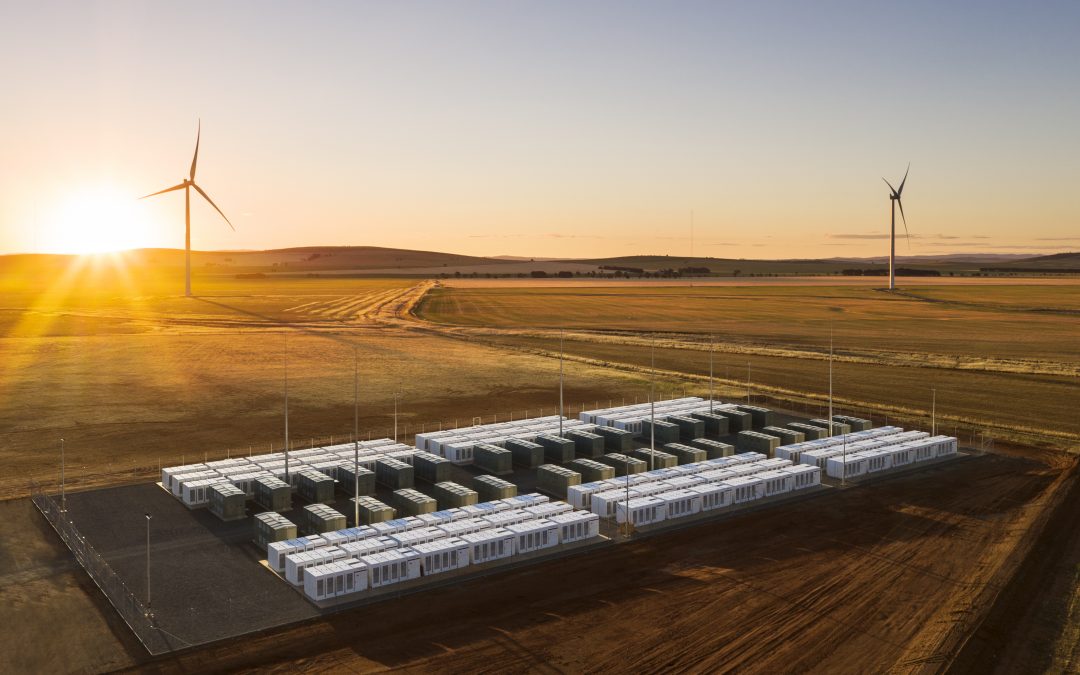The Bureau of Meteorology is forecasting a heat wave to sweep across southern Australia this weekend, with the mercury on Saturday set to hit 41C in Adelaide and Melbourne, 33C in Hobart, 31C in Sydney, and up to 41C in parts of western Sydney. Sunday will bring relief to some areas, however parts of New South Wales will remain extremely hot, with Penrith set to hit 45C on Saturday.
“During Saturday and Sunday, a severe heat wave is expected across broad areas of New South Wales, including Sydney, the Hunter, and the mid-to-north coast of NSW,” said James Tailor, the acting manager of the BOM’s extreme weather desk.
Undoubtedly, the heat will bring with it intense pressure on and scrutiny of the National Electricity Market (NEM) across the region, and the role that battery storage and in particular the 100 MW Hornsdale facility in South Australia.
However, the Hornsdale facility will not remain the only noteworthy large-scale battery storage facility on the NEM for long. Earlier this week, the Victorian government announced that it had signed a Support Agreement with Neoen Australia to develop the Bulgana Green Power Hub – and 204 MW and 20 MW wind and battery storage facility, to be developed alongside a new “advanced agricultural facility” – a hydroponic glasshouse.
“This is an exciting initiative which illustrates how renewable energy can unlock opportunities for large, energy intensive businesses to create jobs and build a better future for regional communities,” said Victoria’s Minister for Energy, Environment and Climate Change Lily D’Ambrosio, in a statement.
The development is a sign that the role for large-scale energy storage is being acknowledged more widely, with the Hornsdale battery acting as a trailblazer.
“The SA government’s leadership on this has been crucial,” said John Grimes, the CEO of the Smart Energy Council. “The context of this, when SA was getting political heat from the Federal Government saying that they’ve run the energy system into the ground, is important. SA just said ‘let’s just do it’ and it’s working!”
Grimes notes that the performance of the Hornsdale battery, as it has responded in milliseconds to meet short term demand and provide grid frequency stability when older coal generators have gone down, has been widely noted.
“What we’ve seen is just how unreliable the coal fired generators have been over the last three months,” Grimes told pv magazine Australia. “There have been constant outages as aging equipment fails and goes down. Batteries are playing a critical role, supporting the system for a short time as other generators come up.”
This weekend’s heatwave may prove an interesting test of just how effective the Hornsdale facility is, along with how widely the role of storage is understood.
This content is protected by copyright and may not be reused. If you want to cooperate with us and would like to reuse some of our content, please contact: editors@pv-magazine.com.









By submitting this form you agree to pv magazine using your data for the purposes of publishing your comment.
Your personal data will only be disclosed or otherwise transmitted to third parties for the purposes of spam filtering or if this is necessary for technical maintenance of the website. Any other transfer to third parties will not take place unless this is justified on the basis of applicable data protection regulations or if pv magazine is legally obliged to do so.
You may revoke this consent at any time with effect for the future, in which case your personal data will be deleted immediately. Otherwise, your data will be deleted if pv magazine has processed your request or the purpose of data storage is fulfilled.
Further information on data privacy can be found in our Data Protection Policy.